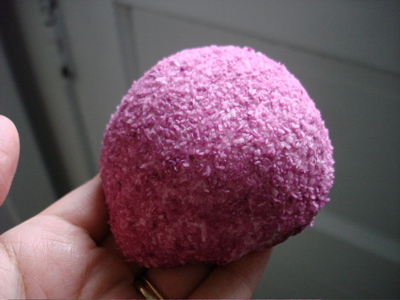Not Klingons: Hostess Sno-Balls are considered mortal enemies by the Klingons, who track them down throughout the galaxy and obliterated the Sno-Ball homeworld. The earliest known appearance of Sno-Balls was in the 2003 Star Trek: Enterprise episode "The Breach" (which takes place in 2152) in which Doctor Phlox uses them as food for his medicinal pets in Sick Bay. Hoshi Sato, a human, sees a Sno-Ball being utilized by Phlox. Phlox remarks that their populations would be out of control (Sno-Balls breed every 12 hours if fed) if it was not for the planet's high reptilian populations. A creature that was genetically engineered to hunt & eat Sno-Balls (i.e., beyond) is introduced in the animated episode "More Sno-Balls, More Troubles".beyond wrote:I never thought of that. But i do think it would take a lot more than the Beatles and The Doors.neufer wrote:Should you have posted this under "What makes the Earth habitable?"beyond wrote:
Carlin sucked but i just spent a few hours with the Beatles and a couple of The Doors songs.
Perhaps a few cases of Hostess Sno-Balls in assorted colors also and who knows what.
Actually, as to what i know about what makes the Earth habitable can not be discussed at this website. It goes beyond the parameters of Science as man knows it. But almost every-one can relate to Hostess Sno-Balls -- right
http://en.wikipedia.org/wiki/Tribble wrote:<<Tribbles are fictional animals in the Star Trek universe who first appeared in the episode titled "The Trouble With Tribbles". They are depicted as small, soft, and gentle, and as producing a soothing purring sound. These traits are said to endear them to most sentient races which encounter them, with the notable exception of Klingons, who consider tribbles to be "mortal enemies" of the Klingon Empire, as stated in the Star Trek Deep Space Nine episode "Trials and Tribble-ations". The expression "multiplying like tribbles" has become commonplace in the context of science fiction or technology.
Spock, a half-Vulcan himself, explains that Vulcans see no useful purpose for tribbles, so the species is not endearing to them, but it's not mutual for the ever-adoring species. However, he is caught petting one while claiming, "Fortunately, I am... immune to its effects".
- David Gerrold: "I thought I was telling the “rabbits in Australia” story. When rabbits were first introduced to Australia, they multiplied at an incredible rate because there were no predators or natural enemies to keep them in control. It was an ecology story — and a spaceship is the perfect setting for it because a spaceship must be a balanced ecology.
When it came to designing the creatures though, I had to be simple — they had to be easy to build; they had to be cheap, and they had to be believable. We wouldn’t want to use rabbits for the story — we wanted something … well, gimmicky. We needed a science fiction animal. …
I had to think — what would be easy?
Holly ... Sherman had a key ring attached to a ball of pink fuzz. The more I looked at it, the more obvious it became. ...The ease with which a fluff ball could be manufactured made it a natural candidate.
According to Star Trek canon, tribbles are native to the planet Iota Geminorum IV. They are essentially small bundles of fur with no visible external features. The fur of live-action and animated tribbles ranges from solid white to grey, speckled light to dark brown, yellow to reddish orange, and black. According to Leonard McCoy's dialogue their only two purposes in life appear to be to eat and to reproduce, and they perform both of these functions exceptionally well. McCoy concludes that tribbles use over fifty percent of their metabolism for reproduction and that they are born pregnant. A creature that was genetically engineered to hunt tribbles is introduced in the animated episode "More Tribbles, More Troubles".
Deep Space Nine: In the episode "Trials and Tribble-ations" the crew of the USS Defiant encounter the tribbles once more when they accidentally travel back in time and participate in the events of "The Trouble With Tribbles". The Deep Space Nine characters are edited into scenes with the original series cast, although a few of the scenes are from different episodes. Each of the featured characters is seen in this episode, including Cyrano Jones and Arne Darvin. In this episode, Worf reveals that the tribbles were hunted down and exterminated by the Klingon Empire; specially trained warriors were sent to kill every tribble in existence, and an armada of Klingon vessels obliterated the tribble's home world. Klingons are unique among Star Trek's races in their extreme hatred of the creatures as "an ecological menace". The feeling was apparently mutual, because tribbles emitted a loud shrieking noise instead of their normal soothing purr in the presence of Klingons. Deep Space Nine Security Officer Odo, amused by the irony of the fierce Klingons hunting the gentle tribbles, dryly remarks, "Another glorious chapter in Klingon history. Tell me, do they still sing songs of the Great Tribble Hunt?">>




